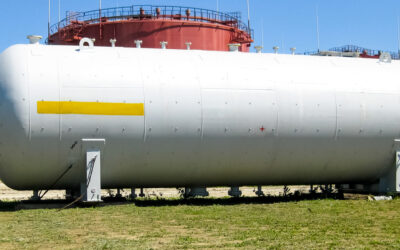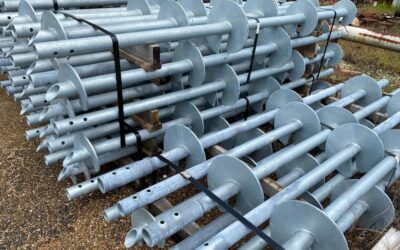Helical pile foundations present a great solution for a variety of deep foundation needs — from underwater installation to support offshore wind turbines to commercial buildings in seismic activity-prone areas. They can be more cost-efficient than traditional foundation options and boast a better environmental impact. But they also present unique design considerations.
While traditional poured foundations span the entire footprint of the structure they support, helical piles must be spaced in order to ensure their integrity and provide adequate bearing capacity to the supported structure. This means that knowing the requirements for helical pile spacing is necessary to install a functional pile foundation.
Keep reading for what you need to know about spacing requirements for helical piles.
How Should Helical Piles Be Spaced? The Top Recommendation
Adjacent helical piles should be spaced, center-to-center, five times more than the diameter of the largest helix. Spacing of only three times the largest helix diameter is considered the minimum necessary spacing, but there are special circumstances where closer than this may occur with a reduced safety factor or battering of the pile to keep the proper helix distance.
All relevant building codes require that helical pile foundations have adequate load bearing capacity to support the intended structure. (The load bearing capacity of helical piles can be calculated by a few different methods.) This will affect the depth to which the piles are installed, as well as the diameter of the helical plates, which will in turn affect the required pile spacing.
What Happens if Helical Piles Aren’t Spaced Properly?
It’s important to retain a minimum spacing of helical piles of at least three diameters; otherwise, the helical plate of one pile can contribute stress to the soil bearing a nearby pile, reducing its capacity for bearing the weight of the supported structure.
Maintaining minimum spacing is necessary at bearing depth — that is, the depth of the helical plates on the piles. For structures that require a helical foundation with a high load bearing capacity, helical piles can be installed at angles, ensuring that they are adequately spaced at bearing depth, though they may be closer together at the tops of the piles, which have no helices.
The possible outcome of piles spaced too far apart is more intuitive: they will be unable to fully support the load of the structure, and the structure may sag between the piles or incur other damage. This may also result in damage to overloaded piles, or even total foundation failure.
Get Expert Helical Pile Design & Installation at Elite Helical
At Elite Helical, helical piles are our entire business. From our design engineers to our installers, we’re well-versed in the best practices for helical pile foundation design and installation, from helical pile spacing to calculating soil bearing capacity. Contact us today to discuss how a helical pile foundation can support your next industrial construction project, midstream/pipeline job, energy transmission, and/or commercial construction need.






